Copyright 2020 - 2021 irantour.tours all right reserved
Designed by Behsazanhost
The Mosques in Islamic Cities
The Mosques in Islamic Cities
The mosque (Masjid' in Arabic) is supposed to provide ultimate fulfillment of the greater human values in the individual character and community spirit, that lies at the root of the Islamic prayer. The Arabic term Masjid literally means a place where one prostrated oneself, before God, or in other words, completely surrenders to Him. Since all places are equal for God and complete resignation and submission unto Him could be shown anywhere, a sanctuary was not considered a fundamental necessity; but prayer in Islam was, however, not intended to be a mere ritual; it was something more.
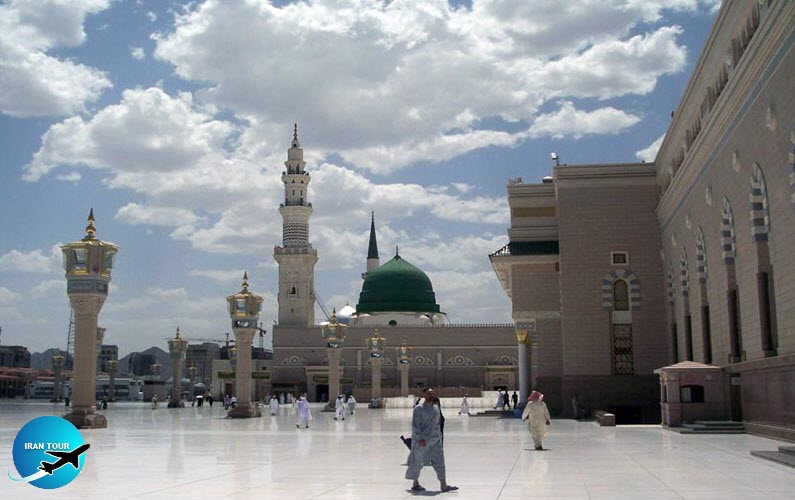 |
| Al-Masjid al-Nabawi - It is the Masjid of Mohammed |
The prayer ( Salat) represented a whole way of life. That is why the mosque of the Prophet at Madina became the place where the Muslims' community life manifested itself in all its nobler aspects. All the important activities affecting their daily life took place in the mosque. Here they assembled for prayer behind the Prophet; here the Prophet delivered his addresses and speeches which contained regulations affecting the religious, social, and political life of his followers; here he used to sit and talk to people who came to him; here he received the dele: gates from other parts of Arabia calling upon him; and here were important matters discussed, cases heard and justice administered.
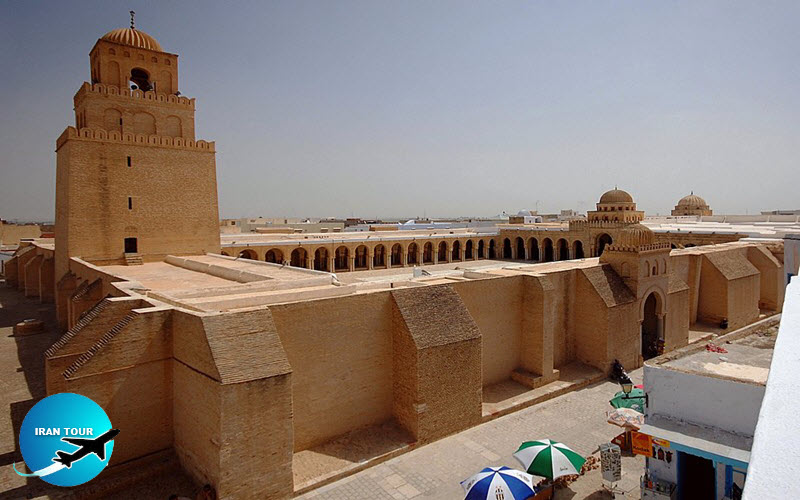 |
| The oldest and most prestigious mosque in the Africa Kairouan Tunisia |
The general character of the mosque was determined from the early mosque of the Prophet at Madina. Thus, in the early days of Islam, the mosques Were centers of daily Worship of the Muslims, and of the social and political administration. Islam is an exceedingly simple religion and has a minimum of doctrine and ritual. Its central theme is the belief in the Oneness of God and the apostleship of the Prophet. This doctrine of absolute submission to the Almighty and of entire dependence on His grace found expression in the daily prayers and was well reflected in the mosque or the prayer house of Islam. Die.
The Holy Quran laid down the designation of the mosque as the House of God and its function as a place for the worship of God, in the following verse :
وأن المساجد لله ولا تدعوا مع تله أحدا. [ الجن ]
(And verily the mosques are for God only; hence invoke not anyone else with God therein ) 72: 18. It removed, as it was intended to do, all the barriers of caste, color, 13ce, and nationality. There could be no distinction in the prayer - hall between white and black, high and low, old and young, rich and poor, Haster and servant. The prayer and the prayer - house have provided it a framework that has proved capable of binding people of diverse races and cultures into a single brotherhood.
 |
| Tarikhane Mosque is one of the earliest Islamic mosques in Iran with a simple style |
The mosques have always played an important role in the educational life of the Muslims, and the Islamic concepts of equality and brotherhood have found therein the true and complete demonstration. This phenomenon was, to a great extent, due to the true character of the prayer which required adherence to the community. The prayer could be performed anywhere, but it was better 11 offered in a mosque, A prayer offered in a congregation was considered to be far more meritorious than the one offered in private. This stresses the community spirit in Islam, ultimately aiming at the cultivation of the spirit of equality and cooperation in social life.
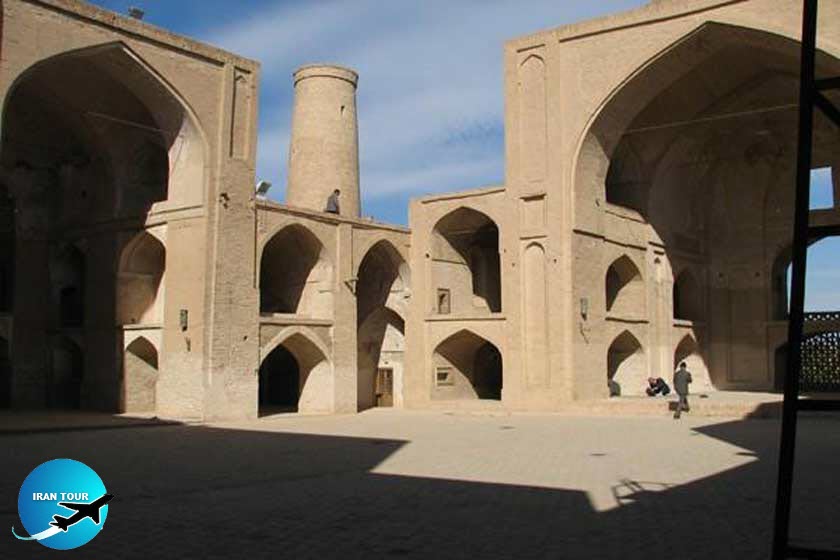 |
| Zavare Jame Mosque- Seljuk-era 1135-1136 |
The mosque is, in fact, a meeting place for the people of the locality of the village. Here, at the appointed five times in the course of the day, they would form a congregation and offer worship, led by a person called 'Imam' (leader), who is supposed not only be better qualified than the rest in learning and wisdom but would also be known to lead a life of piety and righteousness. All the worshippers, whatever their status in life, would stand shoulder to shoulder in a straight line behind the Imam in one or more rows. They would implicitly obey him as one man in all his actions throughout the prayer. This absolute obedience to the Imam is the most imperative part of the prayer and the slightest breach of it would expose the defaulter to a charge of inexcusable negligence.
The strictly enforced procedure of the congregation was expected to inculcate in the community a spirit of discipline. behavior and a high sense of responsibility. Apart from the merit of the divine service and the cultivation of the spirit of community life, the prayer offered the best opportunity for the discussion of the day-to-day affairs of the community. Problems relating to an individual or the community as a whole would come up for review at the gathering of the residents of a locality or a village five times a day.
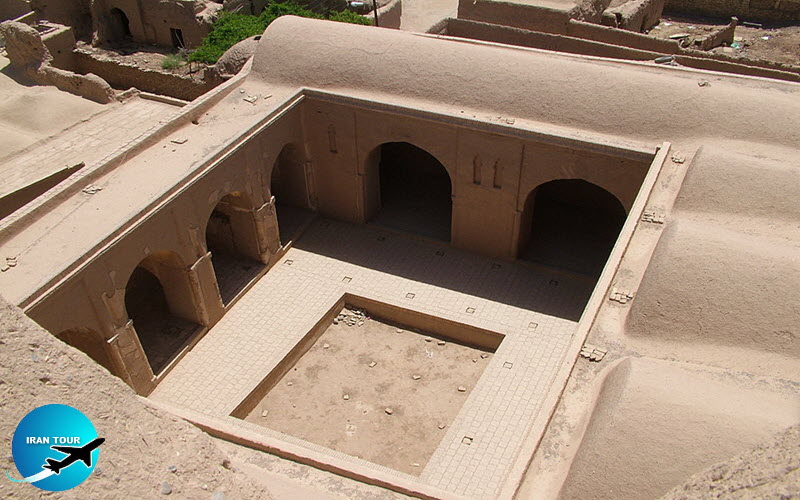 |
| The oldest mosque in Iran. Fahraj Jame Mosque- Yazd |
Almost throughout the history of Islam, as we know from the literary sources, this character of the mosque as a place of divine Service and a public assembly has more or less remained unchanged. By the rapid expansion of the Islamic state, the centers of political activities shifted from the mosque and it became more of an s31ctuary; but could not completely cast off its old character and it still continued to be visited for purposes other than that of worship. That is why even after the center of political activities shifted from the mosque, it remained to be the nucleus of the religious and social activities of the community. This multipurpose character of the mosque was clearly manifested in the history of the glorious mosque of Al-Azhar. It has remained for many centuries as proof that in Islain worship and learning go hand in glove with each other and that Isla:n knows 10 conflicts between religion and learning in the wide:: sense of the word.
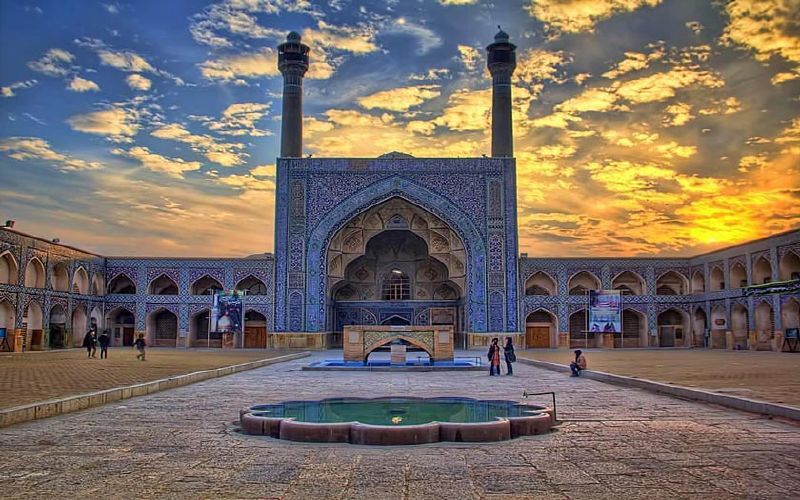 |
| Old Jame Mosque- Esfahan- A collection of Iranian art |
The educational character of the mosque of l-Azhar raised it to the position of the most important educational institution in the world, and it has attracted students and research scholars from different countries. The System of education adopted by this mosque since its inception is complete! natural one. It was the teaching center of all branches of Islami studies, Arabic literature, and other sciences, e geography, astronomy engineering, mathematics, medicine, etc. It is recalled that the most famous University of Al-Azhar was first housed in this mosque more than one thr:11sand years ago.
The Bosque could thus become a permanent venue for a prayer-house, an educational center, a community hall, and, sometimes, a hostel for students. It is the mosque in which all facilities of lodging were provided to teachers and students, particularly in the cloisters of it. Even after the introduction of regular educational institutions, a mosque remained a place of instructions. Learning of the Qur'an by heart and its detailed and comprehensive study formed the starting point of Islamic learning and the study of the Traditions of the Prophet came next. In principle, therefore, there was not much of a difference between an educational institution and Fat mosque.
 |
| Varamin Jame Mosque- Ilkhanid era 1322 |
The latter served as a school and the teacher was taking his place often beside a pillar with pupils seated in front in a row or semi-circle. It was not unusual for a teacher to live in the mosque itself where a separate room was provided to him. The early mosques that were established in the newly conquered territories were, likewise, centers of daily, Juma and Id prayers, and of educational, political, and social activities, subject to modifications dictated by local conditions. Among the important mosques of the different lands of Islam, which have played a leading role in the spread of Islam and building of a healthy Islamic society, are the Holy Mosque of Mecca, the mosque of the Prophet at Madina, the Al-Aqsa mosque, and the mosque of Umar at Jerusalem, Grand mosque at Damascus, the mosques of Amr bin Al-Aas, Al-Azhar and ibn Tulun at Cairo, the great mosques at Cordova and at Granada in Spain, the mosques of Isfahan, Shiraz, Bagdad and Constantinople, the early mosques of Indian Sub-continent and Iran), to name only a few. The role of these mosques has been in the long history, a circle within the sphere of calling to Allah and spreading the message of Islam in its simplicity, equality, and purity.
- Details
- Category: IRAN Blog